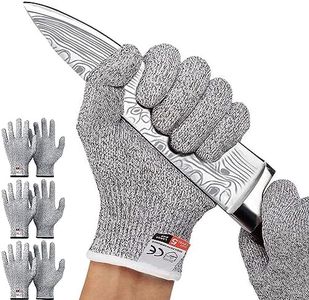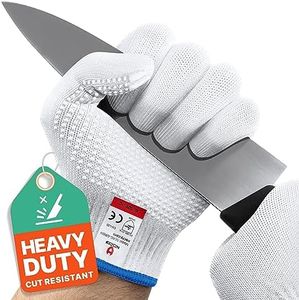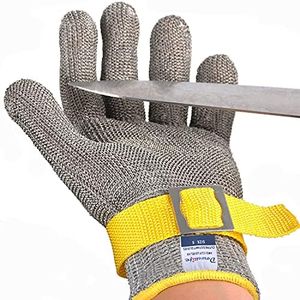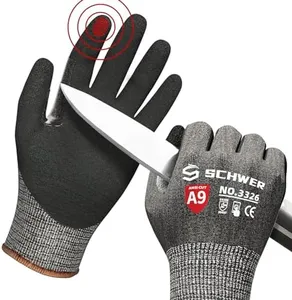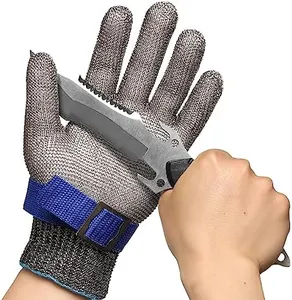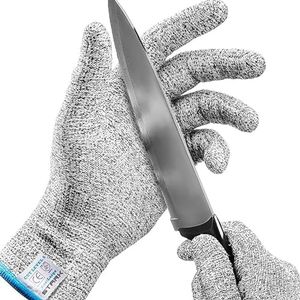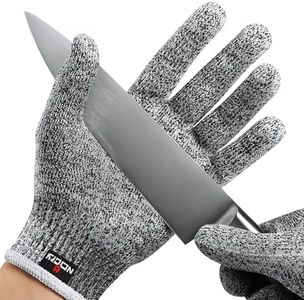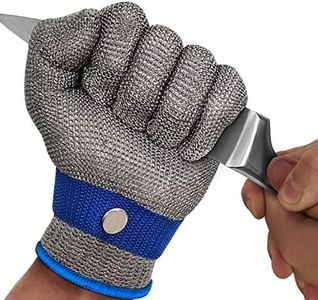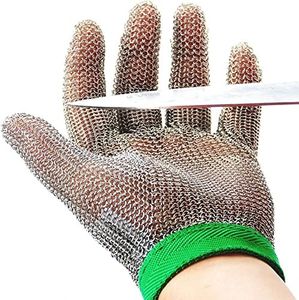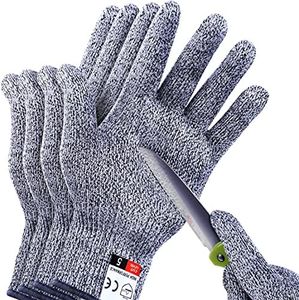We Use CookiesWe use cookies to enhance the security, performance,
functionality and for analytical and promotional activities. By continuing to browse this site you
are agreeing to our privacy policy
10 Best Cut Proof Kitchen Gloves
From leading brands and best sellers available on the web.Buying Guide for the Best Cut Proof Kitchen Gloves
When choosing cut-proof kitchen gloves, it's important to focus on both safety and comfort. These gloves are designed to help protect your hands from accidental cuts, especially when you're using sharp knives, graters, or mandolins in the kitchen. The key to buying the right pair is to balance the level of protection offered with how comfortable and practical the gloves are to wear during food prep tasks. By paying attention to the most important features, you can ensure your choice suits your cooking habits and provides peace of mind.Cut Resistance LevelCut resistance level refers to how much protection the gloves offer against sharp objects. This is measured according to standards, such as the EN388 rating, which ranges from low to high protection. Lower levels provide basic defense for light kitchen tasks, while higher ratings are better for frequent use with sharp or heavy-duty tools. When deciding, think about how often you use sharp items and how concerned you are about accidental nicks or deeper cuts. If you’re just slicing veggies occasionally, a moderate cut resistance may be enough. If you use sharp tools daily or have little knife experience, go for the highest protection available.
MaterialThe material of cut-proof gloves affects both their effectiveness and how they feel to wear. Common materials include high-performance polyethylene (HPPE), Kevlar, and sometimes steel fibers blended in. Some materials are softer and feel more like fabric, while others are stiffer but stronger. If you want maximum safety, gloves with blended materials (like steel fibers with synthetic threads) offer higher protection, but may feel heavier or less flexible. If comfort and flexibility matter most for you, choose a lighter synthetic option. Consider if you have skin sensitivities or allergies as well.
Fit and DexterityFit and dexterity determine how easily you can move your fingers and how well you can grip objects while wearing the gloves. A snug, well-fitted glove allows you to handle knives and food items skillfully, reducing the chance of mistakes. Gloves that are too loose can be awkward and unsafe, and ones that are too tight may be uncomfortable over time. Try to find a size that matches your hand for a good balance of movement and protection. If you do a lot of precise kitchen work, prioritize gloves that advertise high dexterity.
Grip TextureGrip texture refers to the pattern or surface on the outside of the glove that helps you hold slippery or small items more securely. This can be important when you’re handling wet food, slick knives, or glass. Some gloves have an added coating or a raised texture for a better grip, while others are smooth. Think about what tasks you do most often: for cutting vegetables, a basic grip is fine, but if you are working with fish, oily foods, or fragile glass, a glove with enhanced grip will be safer and more convenient.
WashabilityWashability is about how easy it is to clean the gloves after use, which is essential for food hygiene and durability. Most kitchen gloves are machine washable, but some can only be hand-washed or might degrade after repeated cleaning. If you plan to use the gloves often or for handling raw foods, pick a pair that's easy to wash and won’t lose its protective qualities after multiple washes. Check for gloves that dry quickly and resist collecting odors for added convenience.
